Notes from the South Downs Way
By Mark Wright
Previous familiarisation trips with my daughter Eb have seen us follow rivers and coastlines – along the Thames Path from Oxford to Westminster, and from St Ives to the Lizard on the South West Coast Path. This time, though, we found ourselves heading somewhere a little different. No water’s edge to follow – just the promise of big skies, open country, and a trail that carves its way across the chalk ridge of the South Downs.
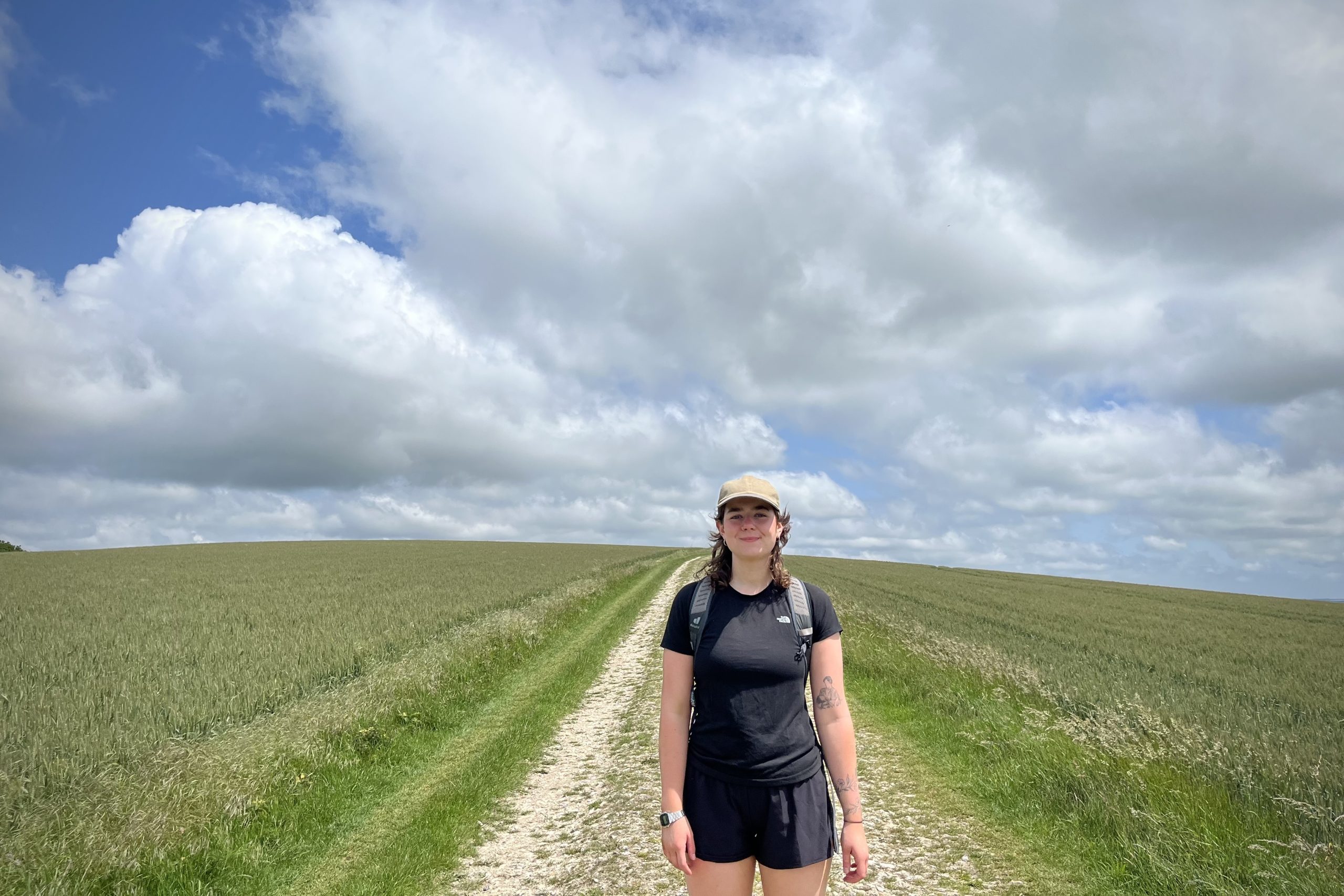
In truth, it hadn’t occurred to us until we were out there that we did still have a natural marker to follow – only this time, it was the escarpment itself. We chose the western section of the South Downs Way partly because, as our track record suggests, we’re drawn to the south of the country – the climate tends to be milder, and there’s something really appealing about those wide, rolling arable landscapes. Living as I do in the Lake District, I’m surrounded by rugged beauty, but there’s a certain freedom in stepping out from the embrace of the fells and into the sweep of open country. I’d visited Denmead, not far from the trail, the previous year and had been struck by just how quietly beautiful the countryside was. This trip was a chance to share that feeling, and to discover what else the South Downs had to show us.
The western section of the South Downs Way doesn’t really lend itself to a daily, diary-style write-up. The reason being, it’s pretty much the same each day – and that, believe it or not, is the really great thing about it. Each day serves up more of the same, and that ‘same’ is absolutely glorious. Picture mile after mile of rolling farmland, where the fields softly fold into each other. Add to that delightful woodland, peaceful country lanes, the occasional sleepy hamlet that looks like it’s been plucked from a storybook, and towns so charming they are the very definition of quintessentially English. I mean, why wouldn’t you want more of the same each day? It’s absolutely idyllic, and it was everything we’d gone in search of.
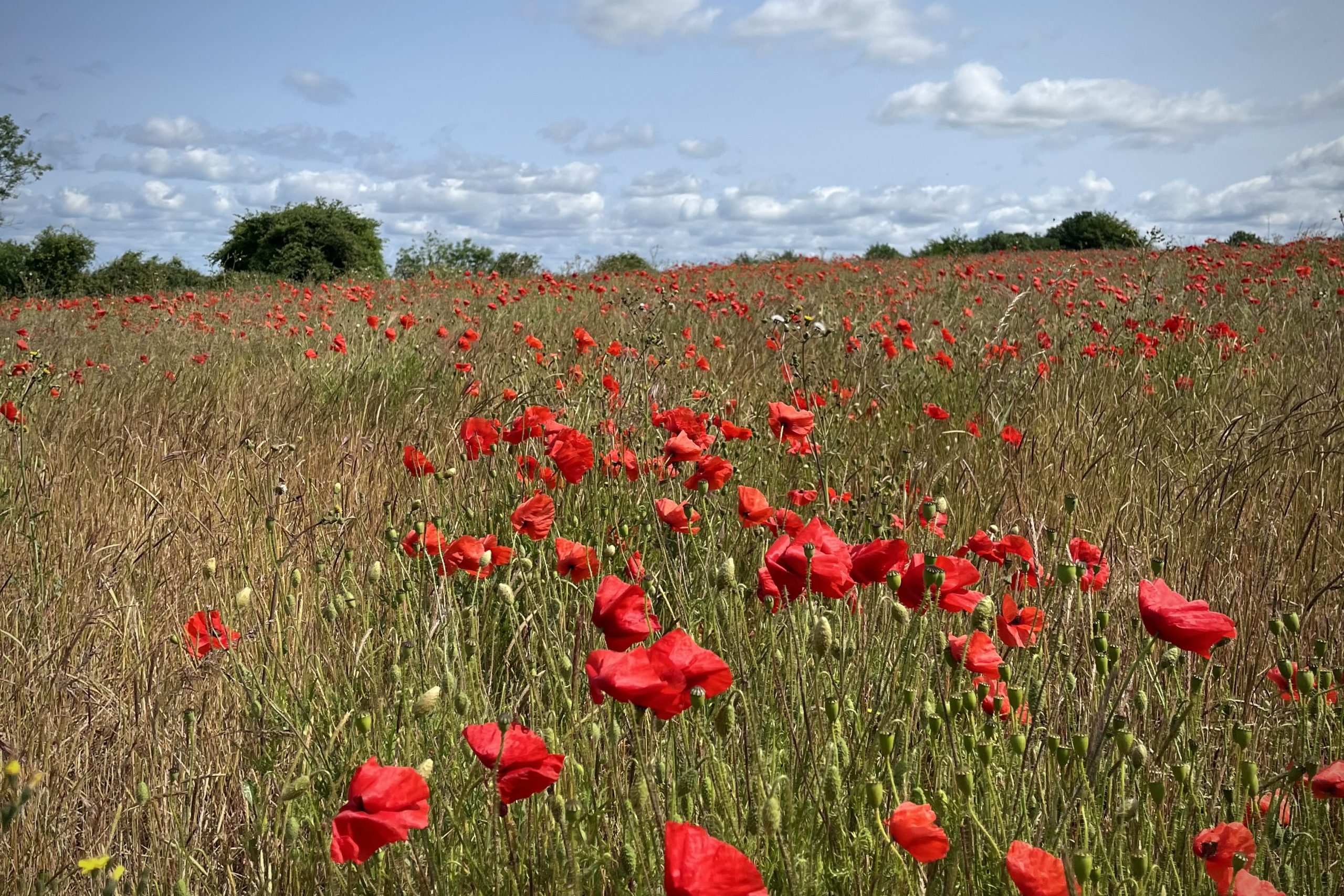
Of course, that’s not to say the days blur into one big green dreamscape. Each day has its own highlights – the kind of places that make you slow your pace, stop talking (admittedly a rarity in our house), and really soak up your surroundings. The first of these came within an hour of leaving Winchester and heading out into the rolling East Hampshire countryside. Making our way to the delightfully named Cheesefoot Head, we were greeted with a burst of colour as we passed by blazing poppy fields. Stunning views over the Itchen Valley capped a wonderful start to the walk.
Walking from Exton to South Harting brought a couple of notable climbs, and with them, two National Nature Reserves of real character. First came Old Winchester Hill – one of the finest Iron Age hill-fort sites in the south – followed by Butser Hill, the highest point on the South Downs Way. At just 270 metres, it doesn’t exactly scrape the sky, but the far-reaching views over the Meon Valley made it feel loftier than the stats suggest.
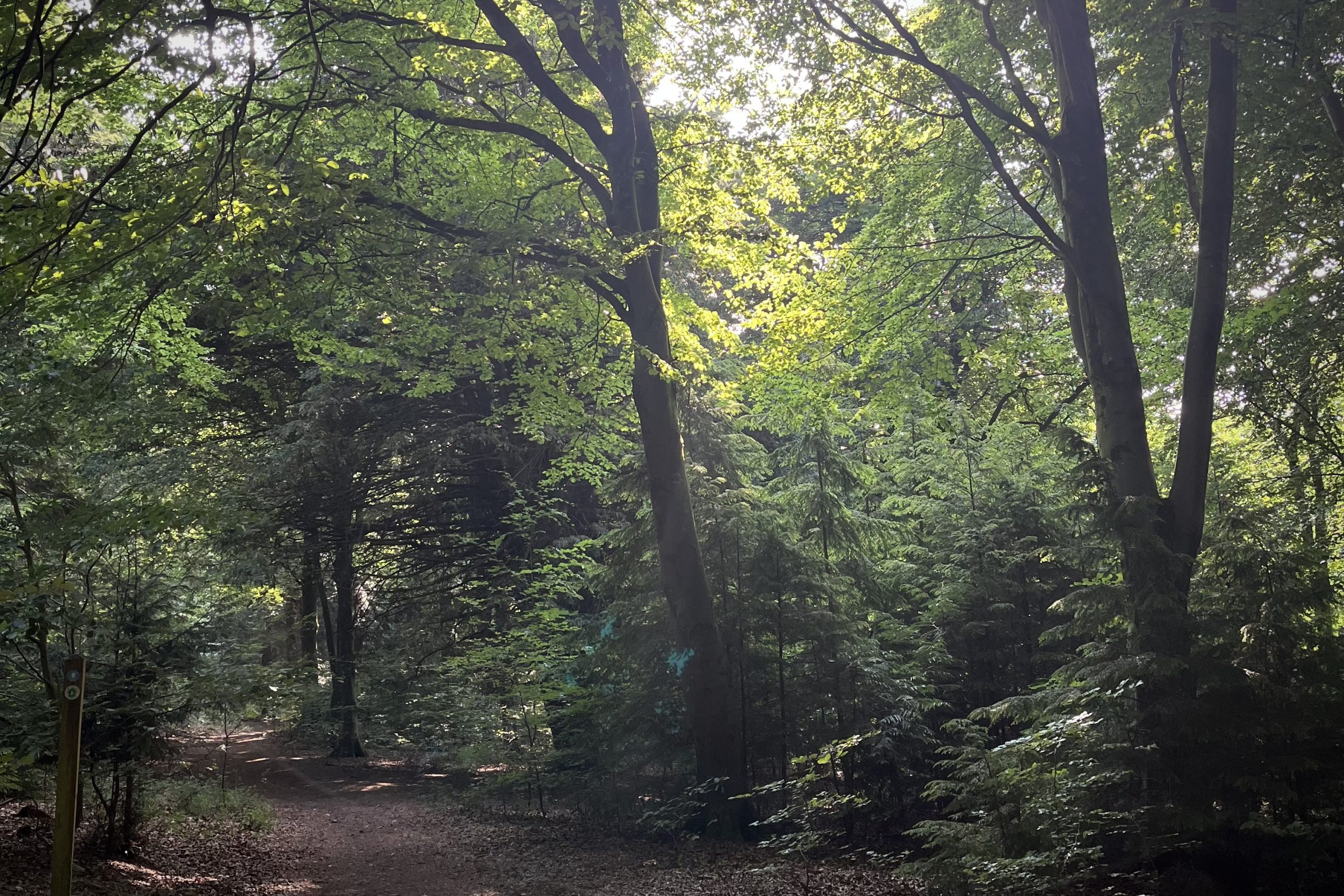
The real highlight of the day, though, was Queen Elizabeth Country Park. Here, the trail slips into woodland, and everything changes. I was reminded of the writer and environmentalist Roger Deakin, who said: “To enter a wood is to pass into a different world in which we ourselves are transformed.” And that was certainly the case. We lost all track of time – and, for a while, all concern for the trail we were meant to be following. An evening that would never come again, as Spike Milligan once achingly wrote.
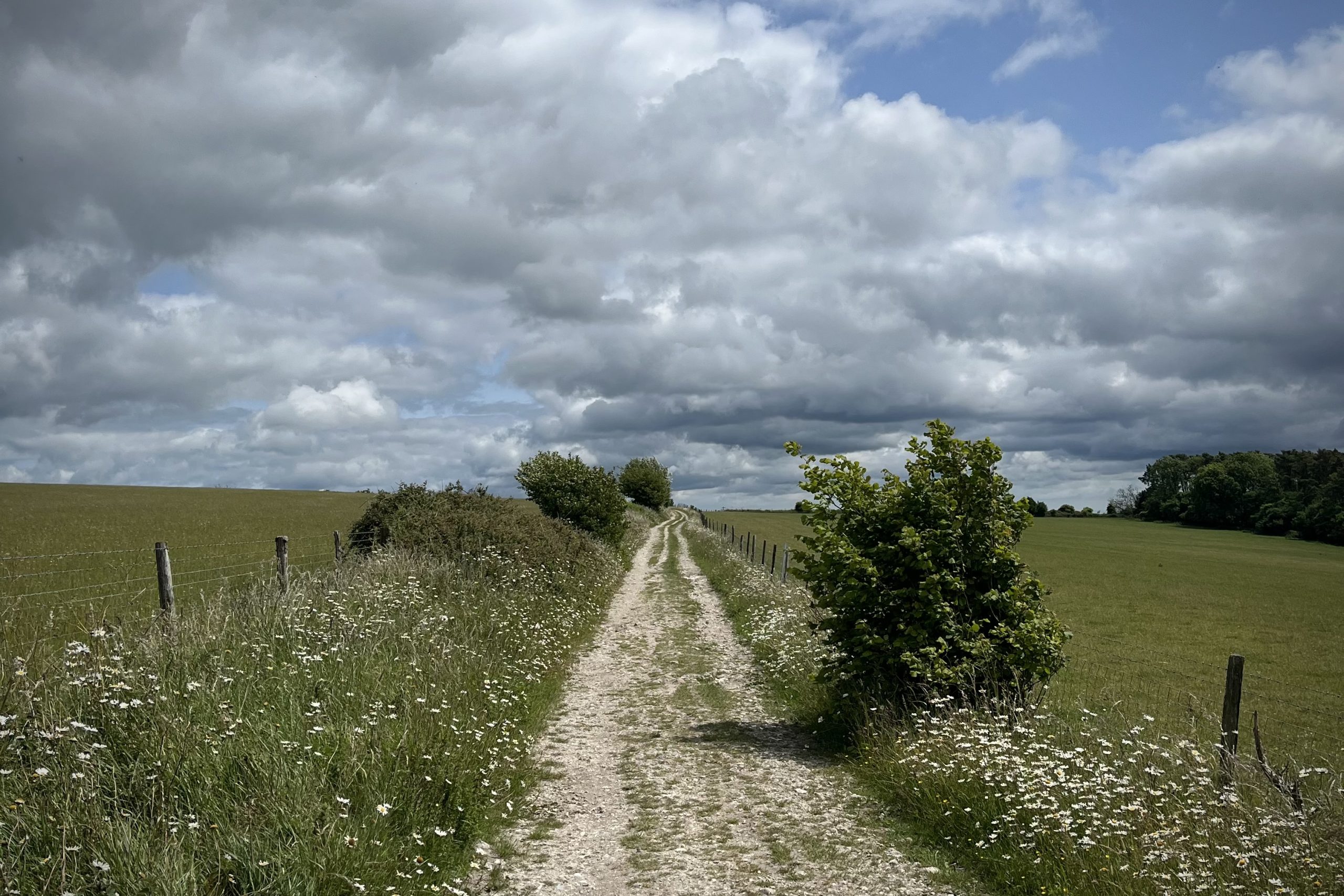
South Harting and Cocking are both incredibly picturesque, and they bookend a memorable day of walking along the South Downs escarpment, with sweeping views over the patchwork fields below. Harting Down leads you to the second of the trail’s two Beacon Hills, and beyond that lies a gentle, wooded section through the Monkton Estate. Be sure to pause at the Devil’s Jumps – an impressive cluster of Bronze Age burial mounds tucked quietly into the hillside.
Despite what I said earlier about every day being much the same, there was, in fact, one day that stood out above the others – and, interestingly enough, our friend Jo had predicted it would be so. Perhaps it was the weather: a little brighter, a touch warmer. Or maybe it was the views, which felt somehow more expansive – the sort that stretch not just across the landscape, but somewhere into your mood as well, lifting your spirits and expanding your thinking. The rolling fields had a little more colour, the hedgerows a little more bustle. Whatever it was, the walk from Cocking to Amberley turned out to be one of the most enjoyable days of walking we’ve ever had.
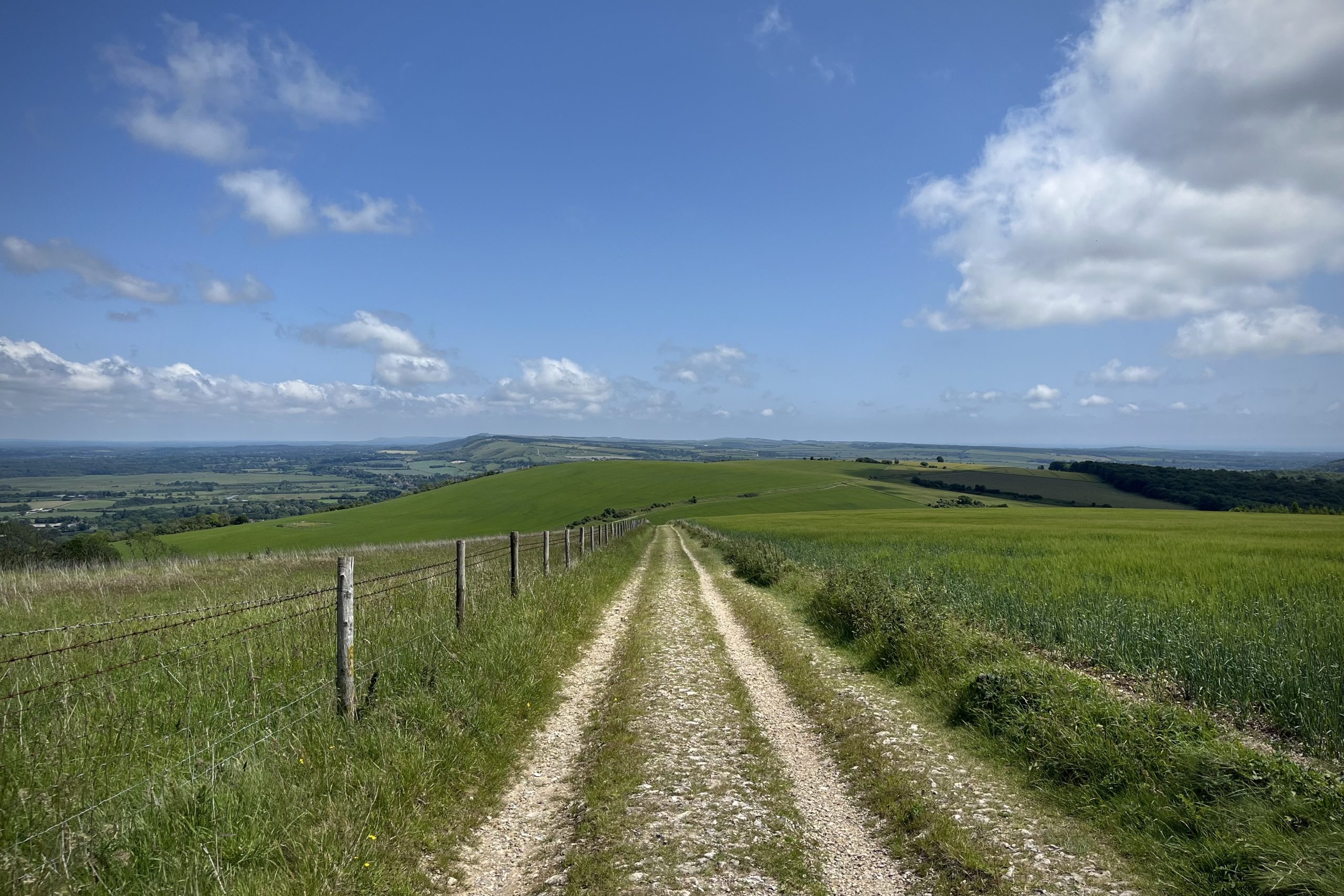
The standout moment? Bignor Hill. The views from the top were simply sensational – sweeping along the ridge of the Downs and tumbling through the Arun Valley below. Thankfully, we had the presence of mind to stop walking, sit down, and just be there for a while. We basked in the warmth of the afternoon sun for the best part of an hour on the edge of a dandelion-filled meadow, doing absolutely nothing – and I would say, doing it perfectly.
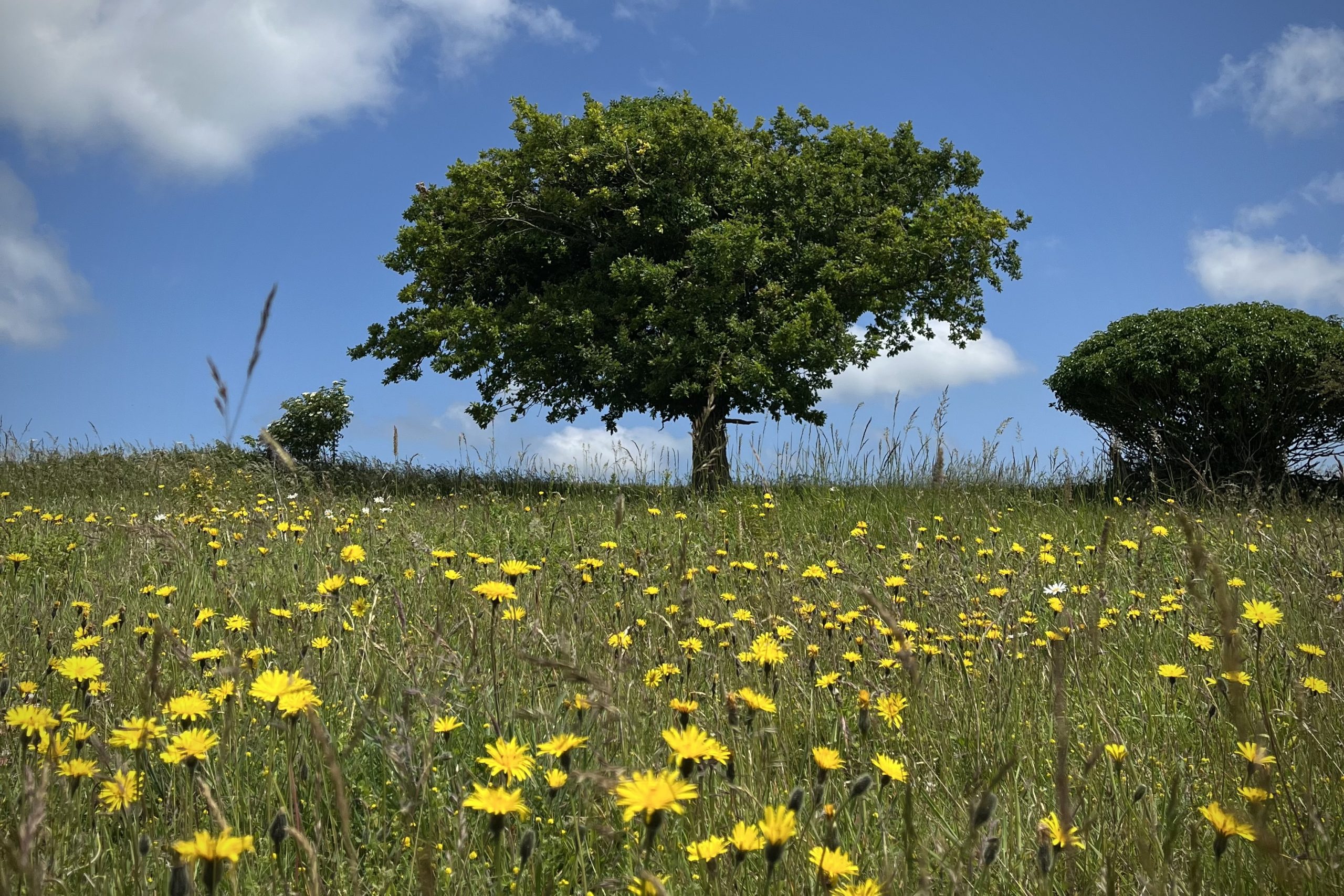
Although our South Downs Way West holidays officially end in Amberley, we’d decided to walk a little further – one more day eastwards to Upper Beeding – and we’re so glad we did. In truth, it’s the first leg of the eastern stretch towards Eastbourne, but for us it felt like a bonus leg. But before we race you, the reader, back up onto the escarpment, it would be wrong not to pause for a moment and say something about Amberley.
Amberley sits perched on a sandstone ridge just below the chalk escarpment, with the wide, open landscape of Amberley Wildbrooks stretching north towards the River Arun. It’s often considered one of the prettiest villages on the South Downs – and with its thatched cottages, flower-filled gardens, and quiet lanes leading towards the church and castle, it’s easy to see why. Unlike many downland villages, where flint dominates the architecture, Amberley has a softer look. Many of its cottages are built from warm local sandstone, giving the village its own distinct charm.
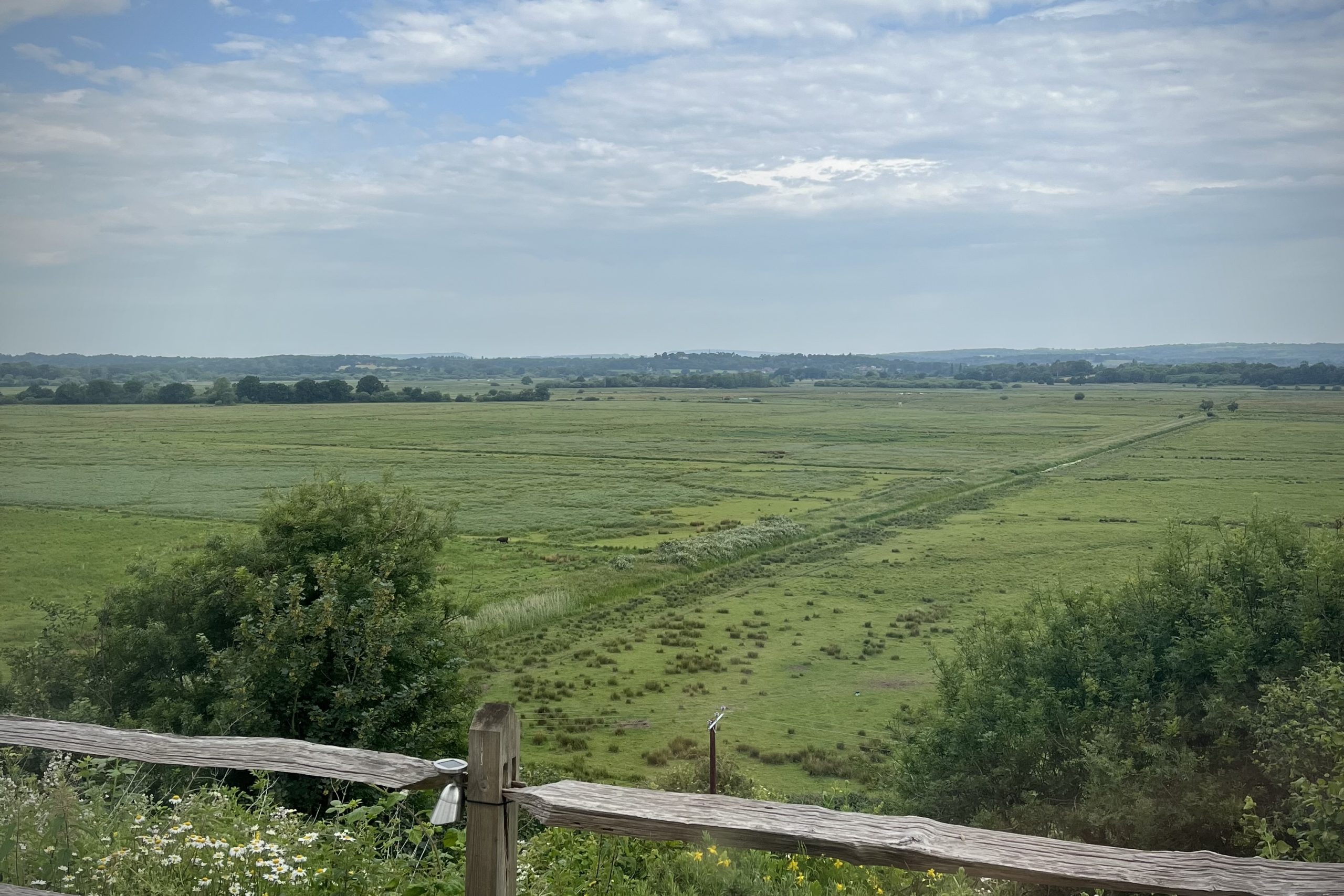
More than the sight of the sun lighting up the sandstone cottages, it was the warmth of the welcome that really stayed with us. On both our arrival and departure, we found ourselves in long, cheerful conversations with locals at the village shop – so much so, and not for the first time, we lost all track of time. We stayed at The Sportsman Inn, where the hospitality was wonderfully genuine, our room was luxurious, the food delicious, and the view from the decking – looking out across the stunning Amberley Wildbrooks Nature Reserve, often affectionately called the ‘Sussex Serengeti’ – was absolutely sublime.
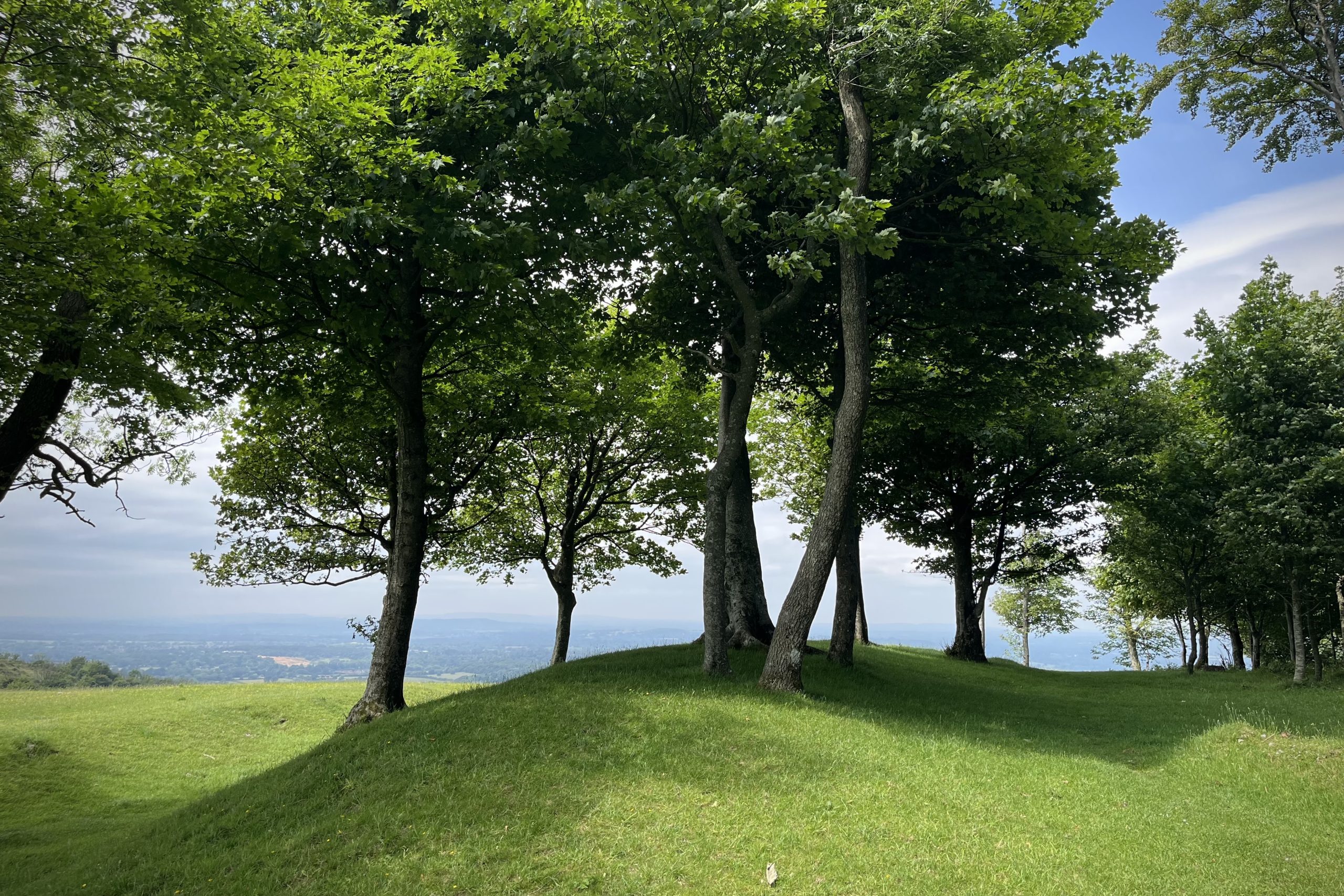
Leaving Amberley behind, we climbed steadily back onto the Downs. The landscape opened up quickly – big skies, sweeping curves of green, and the snaking line of the Arun threading its way through the valley below. The highlight of the day came in the form of Chanctonbury Ring – a circular crown of beech trees perched high on the ridge. Planted in the 18th century on the site of an ancient hill fort, the Ring carries with it centuries of story and superstition. Some say the trees whisper in high winds; others swear you can summon the Devil by running around them backwards (we chose to take their word for it). But standing there, surrounded by open country and with the hazy South Downs rolling away in every direction, it certainly felt like we’d arrived at one of the great natural landmarks of the trail.
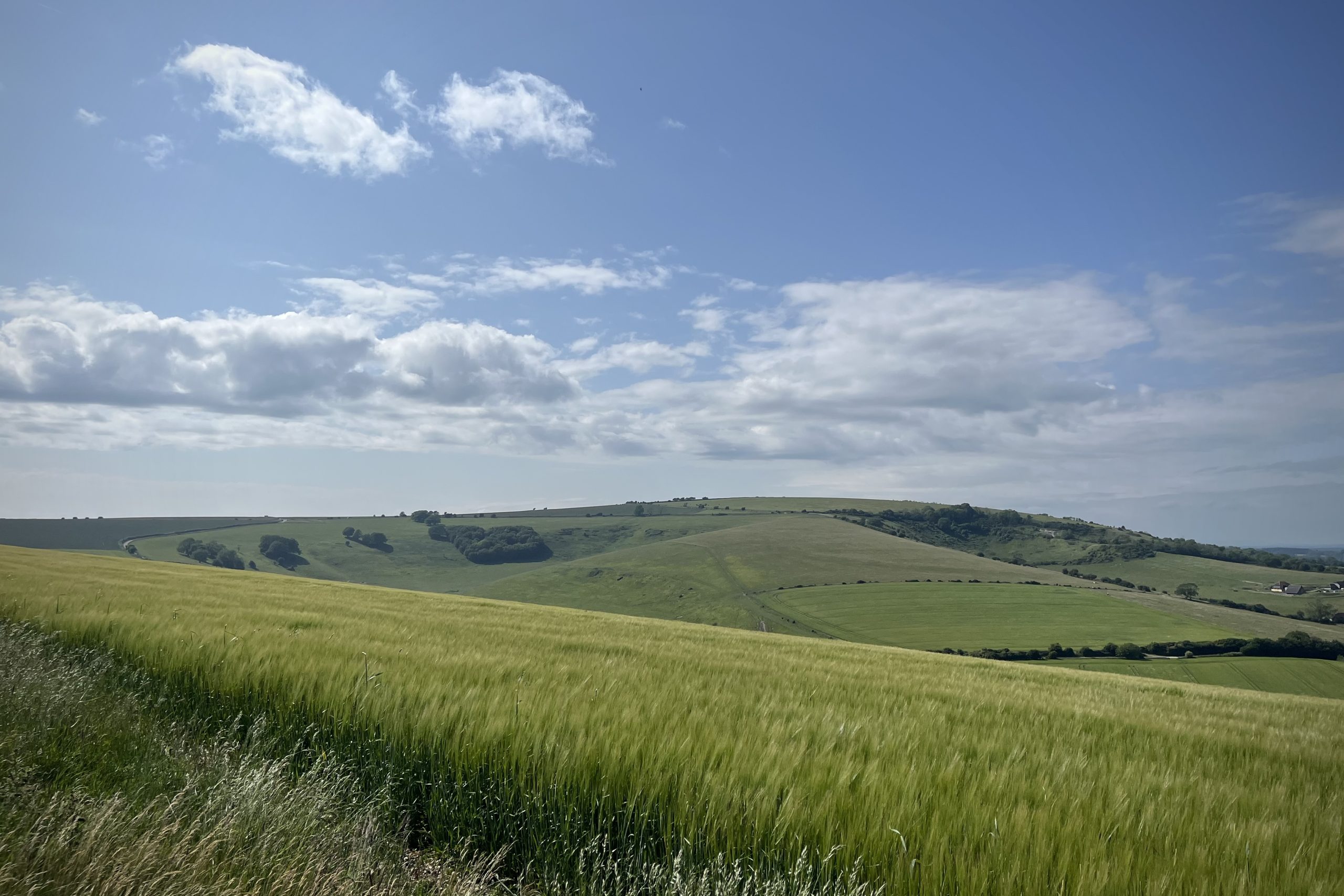
And then, just like that, it was time to begin our descent into Upper Beeding. What with various detours and the like, we walked somewhere in the region of seventy-five miles in five days – and, as ever, it wasn’t really about the distance. It was about the simple joy of walking together, watching the landscape slowly shift, pausing for sweet treats, and forgetting about the rest of the world for a little while.
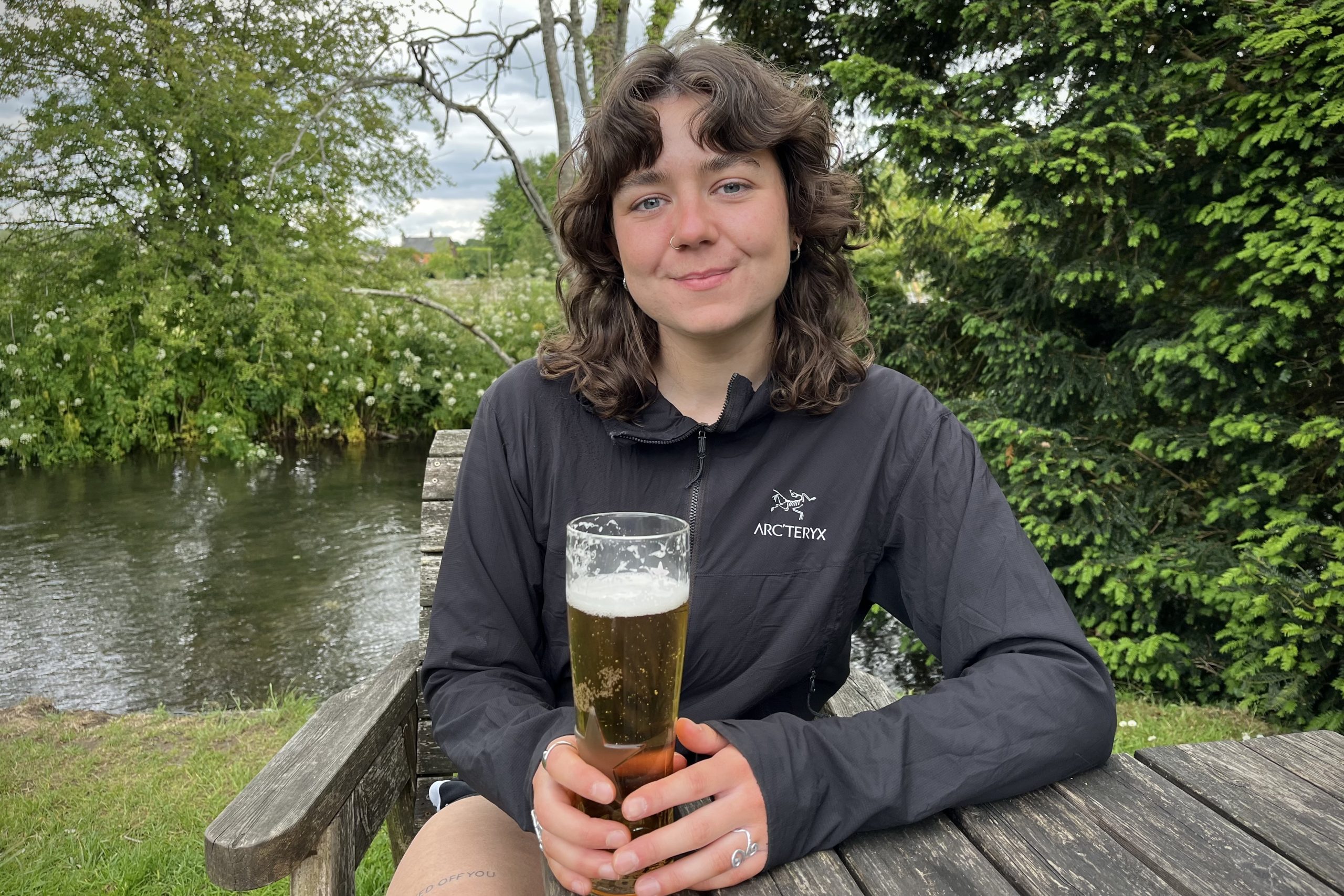
The South Downs Way offered us space to think, time to talk, and certainly opportunities to laugh – usually all within the same mile – and it gave us a line to follow through one of the most quietly beautiful parts of the country, and we feel all the better for having followed it.
If Mark and Eb’s journey has sparked your curiosity, and you’d like to follow in their footsteps along this glorious stretch of southern England, we’d be delighted to help. Simply email us at [email protected] or call us on 017687 72335 to speak with one of our walking holiday experts.